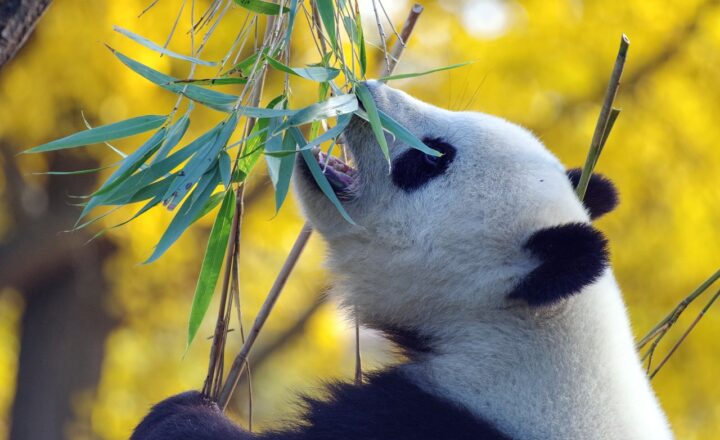Inside a Panda Breeding Center: How Scientists Are Helping Boost Panda Populations
November 15, 2024

Pandas have always captivated our imagination with their adorable appearance and unique behaviors. However, these gentle giants have faced numerous threats due to habitat loss and poaching, leading to their classification as a vulnerable species. In recent decades, conservationists have come together to find innovative solutions to protect and enhance the population of giant pandas. This article takes you inside a panda breeding center to understand the techniques being utilized to boost panda populations and the incredible efforts made by scientists and conservationists.
1. The Importance of Panda Conservation
Giant pandas play a crucial role in their ecosystem as a keystone species. Their feeding habits help to maintain the health of bamboo forests, which are essential for other species’ survival as well. As pandas face challenges such as deforestation and climate change, their decline affects the entire ecosystem, making their conservation imperative.
##### Why Pandas Matter:
– **Biodiversity:** Protecting giant pandas ensures the preservation of various other plants and animals that depend on the bamboo forests.
– **Tourism and Education:** Pandas serve as an ambassador for wildlife conservation, attracting millions of tourists to China’s national parks and raising awareness about endangered species.
2. Understanding Panda Breeding Centers
Panda breeding centers provide structured environments where scientists can study panda behavior, reproductive physiology, and health while applying advanced techniques to increase the population. Located primarily in China, such centers play a crucial role in the fight against panda extinction.
##### Key Functions of Panda Breeding Centers:
– **Breeding Programs:** They implement controlled breeding strategies to maximize genetic diversity and minimize inbreeding.
– **Research and Education:** Centers conduct research on panda biology and ecology while also educating the public about conservation efforts.
– **Rehabilitation and Release:** Some centers focus on preparing captive pandas for eventual rewilding, allowing them to thrive in their natural habitat.
3. Techniques in Panda Breeding: A Closer Look
Inside a panda breeding center, scientists employ several techniques aimed at ensuring the health and viability of panda populations. Here’s a closer look at some of the most effective methods being used today:
##### A. Artificial Insemination
One of the most significant breakthroughs in panda conservation has been the development of artificial insemination techniques. Since pandas typically have a short window for mating (once a year for just a few days), scientists have perfected the art of artificial insemination to increase the chances of successful reproduction.
– **Synchronized Estrus:** Hormonal treatments help synchronize the female panda’s estrus cycle, enabling breeding efforts to be more targeted.
– **Genetic Diversity:** This method allows scientists to choose different males, enhancing genetic diversity and the overall health of future panda populations.
##### B. Cub Rearing
Following successful breeding, the care given to the cubs is vital to their survival. Scientists have developed techniques to nurture cubs both in the wild and captivity:
– **Mother-Cub Interaction:** When possible, cubs are raised by their mothers to learn essential survival skills. This method mimics natural conditions and helps build a bond between mother and cub.
– **Hand-Rearing:** In cases where the mother is unable to care for her cubs, caregivers provide round-the-clock attention, feeding them specialized formula and teaching them how to thrive.
##### C. Genetic Research
Understanding the genetics of pandas is crucial for developing breeding plans that avoid inbreeding and enhance overall population resilience. Genetic studies help:
– **Assess Genetic Diversity:** By analyzing blood samples, researchers can determine genetic relatedness and plan matings accordingly.
– **Predict Health Issues:** Genetic research allows scientists to identify potential hereditary diseases and address them proactively.
4. Success Stories: Panda Population Growth
Through the concerted efforts of breeding centers worldwide, panda populations are showing signs of recovery:
– **Population Increase:** The number of giant pandas in captivity has risen significantly, surpassing 1,800 individuals. This number represents a remarkable increase due to successful breeding initiatives.
– **Reintroduction Programs:** Several pandas have been successfully reintroduced into the wild, with tracking devices helping biologists monitor their adaptation.
The breeding programs have proven effective, but ongoing support for habitat preservation remains crucial for long-term sustainability.
5. Panda Breeding Centers: The Future of Conservation
While scientists have made great strides in panda conservation, challenges remain. Continued commitment from the global community and local governments is vital to enhancing the efforts in these centers:
– **Community Involvement:** Engaging local communities in conservation efforts increases awareness and promotes habitat protection.
– **Research Funding:** Sustainable financial support for research allows centers to explore innovative methods in panda care and breeding.
– **International Collaboration:** Sharing knowledge and resources between countries can lead to further advancements in conservation strategies.
As we look forward, the journey of giant pandas is one of hope and resilience. With committed efforts led by passionate scientists and organizations, we can ensure these beautiful creatures continue to thrive in their natural habitats while enriching our lives with their presence.
Conclusion
The journey of conserving the giant panda is a testament to the dedication and innovation of scientists and conservationists worldwide. Panda breeding centers serve as vital archways to a future where these majestic creatures can flourish once again. It is our responsibility to support and contribute to these efforts, ensuring that future generations will have the opportunity to marvel at the beauty of giant pandas in the wild.
By understanding the science behind panda conservation and spreading awareness, we can collectively ensure that these magnificent animals continue to thrive for years to come.







